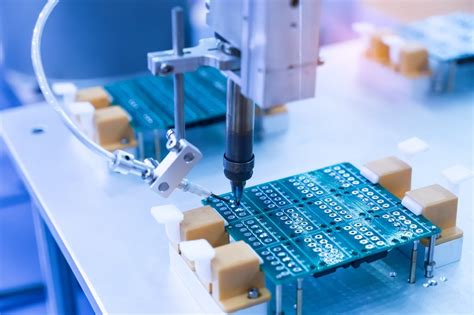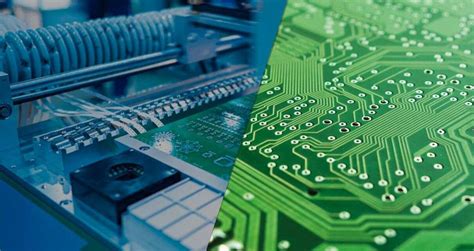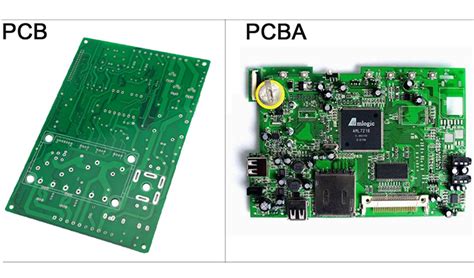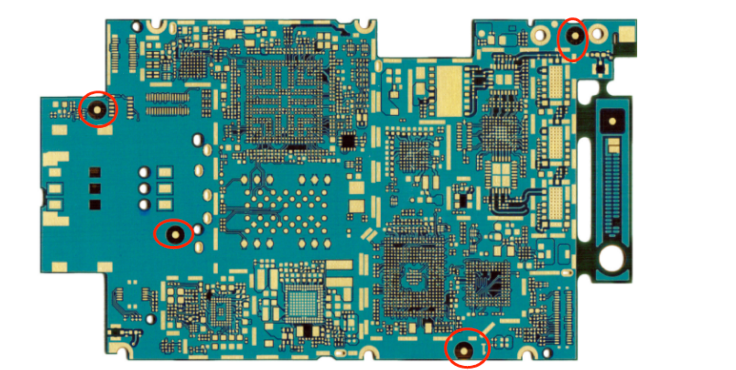Innovative Electrical Circuit Manufacturers Shaping 2023
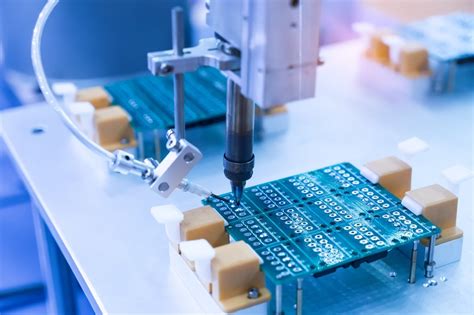
Key Takeaways
When evaluating PCB manufacturing companies in 2023, you’ll notice a sharp focus on balancing cost-efficiency with cutting-edge technology. Innovations like embedded components and high-density interconnect (HDI) designs are redefining PCB manufacturing, enabling faster prototyping and reduced PCB manufacturing cost for industrial automation systems. For example, leading firms now leverage AI-driven quality control to minimize defects by up to 30%, directly impacting your operational ROI.
“The future of PCB manufacturing business lies in agile production models that adapt to both small-batch custom orders and mass-scale deployments.” – Industry Expert
Here’s a breakdown of cost drivers in modern PCB production:
| Factor | Impact on Cost | 2023 Innovation |
|---|---|---|
| Material Selection | High (30-40%) | Bio-based substrates |
| Layer Count | Moderate (15-25%) | Automated layer stacking |
| Surface Finish | Low (5-10%) | Nano-coating technologies |
| Volume | Variable | On-demand PCB manufacturing |
To stay competitive, prioritize partners offering traceability and compliance with global standards like IPC-6012. This ensures your circuits meet safety benchmarks while scaling production. Remember, reducing PCB manufacturing cost isn’t just about cutting corners—it’s about smarter material use and process automation.
For industrial applications, modular designs from top-tier PCB manufacturing companies allow seamless integration with smart LV distribution systems, future-proofing your infrastructure. Keep an eye on firms adopting hybrid manufacturing models—they’re leading the charge in balancing affordability with performance.

Smart LV Distribution System Innovations
When integrating PCB manufacturing advancements into smart low-voltage (LV) distribution systems, you’ll notice how PCB manufacturing companies are redefining energy management. By embedding high-density interconnects and modular designs, these systems now support real-time monitoring and adaptive load balancing. This ensures your facility minimizes energy waste while maintaining operational stability, even during peak demand.
A critical driver is the reduced PCB manufacturing cost, enabling wider adoption of smart LV solutions. Modern multi-layer PCBs with embedded sensors allow seamless communication between distribution nodes, creating self-regulating grids. For businesses, this translates to lower downtime and predictive maintenance capabilities—key for industries relying on uninterrupted power.
However, scaling these innovations requires strategic partnerships with PCB manufacturing business experts. Their expertise in thermal management and signal integrity ensures circuit boards withstand harsh industrial environments. As automation trends accelerate, your investment in smart LV systems becomes a cornerstone for achieving energy efficiency and safety compliance—critical priorities in 2023’s industrial landscape.
Advanced PCB Technology Breakthroughs 2023
When evaluating how PCB manufacturing evolves, 2023 stands out for its focus on precision and scalability. Leading PCB manufacturing companies now leverage additive printing techniques to create multilayer boards with micron-level accuracy, reducing PCB manufacturing cost by up to 30% compared to traditional methods. Innovations like ultra-low-loss substrates and embedded passive components are redefining performance benchmarks, particularly for high-frequency industrial applications.
A key driver is the integration of AI-driven design validation tools, which minimize prototyping cycles. For your operations, this means faster time-to-market and fewer material waste issues. Additionally, advancements in flexible hybrid electronics enable circuits to conform to irregular shapes—critical for IoT devices and smart sensors.
However, optimizing PCB manufacturing business models requires balancing these breakthroughs with sustainability. Many manufacturers now adopt halogen-free laminates and closed-loop recycling systems, aligning with global eco-regulations. By prioritizing both innovation and efficiency, the industry is setting new standards for reliability in power distribution and automation systems.
As you explore these trends, consider how modular PCB architectures can future-proof your designs while maintaining cost-effectiveness. The shift toward miniaturized, high-density interconnects isn’t just a technical leap—it’s a strategic advantage in competitive markets.
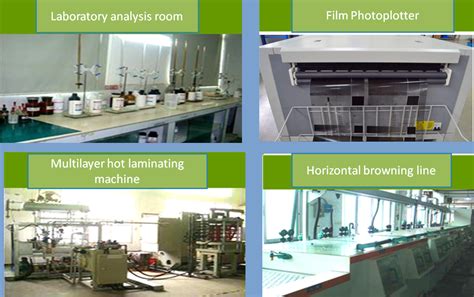
Industrial Automation Circuit Solutions
When optimizing production lines, you need PCB manufacturing solutions that align with high-speed automation demands. Leading PCB manufacturing companies now embed AI-driven diagnostics directly into circuit boards, enabling real-time performance monitoring without disrupting workflows. This integration reduces PCB manufacturing cost by minimizing downtime and predictive maintenance needs—critical for industries scaling smart factory initiatives.
By leveraging multilayer flexible PCBs, these systems support compact, energy-efficient designs while maintaining robust signal integrity. For instance, automated robotic arms rely on precision-engineered circuits to execute micron-level tasks, a feat achievable only through advancements in PCB manufacturing business practices like laser direct imaging and automated optical inspection.
Transitioning to such solutions, however, requires balancing upfront investments with long-term gains. You’ll find that partnering with manufacturers specializing in industrial-grade PCBs ensures compliance with safety certifications while future-proofing operations against evolving tech standards. As supply chains prioritize resilience, the ability to source locally produced circuits further mitigates risks, creating a seamless link between PCB manufacturing innovation and automation scalability.

Efficiency-Driven Electrical Manufacturing Trends
When optimizing your operations, understanding the strategic shifts in PCB manufacturing becomes critical. Leading PCB manufacturing companies are now adopting AI-driven automation to slash PCB manufacturing cost by 15–30%, while boosting precision in multilayer board production. By integrating real-time IoT sensors, you can monitor assembly lines for defects, reducing downtime by up to 40%—a game-changer for scaling your PCB manufacturing business.
These advancements align with broader trends like modular design, which accelerates prototyping cycles and cuts material waste. For instance, high-density interconnect (HDI) PCBs enable compact, energy-efficient circuits ideal for smart LV systems. Transitioning to such innovations isn’t just about speed; it’s about future-proofing your supply chain against fluctuating demand.
Meanwhile, sustainability is reshaping priorities. Techniques like additive manufacturing minimize raw material use, directly lowering PCB manufacturing cost while meeting stricter environmental regulations. Pair this with predictive analytics, and you’ll see how data-driven workflows are eliminating bottlenecks—from component sourcing to final testing.
As global industries lean into automation, your ability to balance cost-effective scalability with zero-defect standards will define competitiveness. The shift isn’t optional—it’s the baseline for thriving in 2023’s efficiency-first landscape.
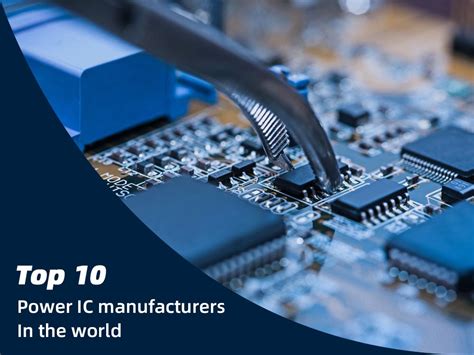
Safety Enhancements in Circuit Design
When designing circuits for industrial applications, you need solutions that prioritize fail-safe operation without compromising performance. Leading PCB manufacturing companies now integrate multi-layered protection mechanisms, such as embedded thermal sensors and arc-fault detection, directly into PCB manufacturing processes. These innovations reduce risks of overheating or short circuits, particularly in high-voltage environments. By optimizing PCB manufacturing cost through automated quality checks, manufacturers ensure stricter adherence to ISO safety standards while maintaining affordability.
Your choice of PCB manufacturing business partners also impacts system resilience. Advanced materials like flame-retardant substrates and conductive inks with self-healing properties are becoming industry norms, minimizing downtime in critical operations. Additionally, AI-driven simulations allow engineers to predict failure points before prototyping, cutting development cycles by up to 40%. These advancements align with global demands for smarter, safer power distribution—bridging the gap between efficiency-driven manufacturing and uncompromising safety protocols.
Transitioning to these next-gen designs not only future-proofs your infrastructure but elevates compliance with evolving regulatory frameworks, from IEC 60364 to NFPA 70E. The result? Systems that protect both equipment and personnel while scaling seamlessly with automation trends.

Global Impact of Smart Circuit Tech
As PCB manufacturing evolves, its influence extends far beyond factory floors. You’ll find smart circuit technologies reshaping industries globally, from automotive electrification to renewable energy grids. Leading PCB manufacturing companies now prioritize designs that integrate real-time diagnostics and adaptive load management, enabling systems to self-optimize under fluctuating demands. This isn’t just about efficiency—it’s about redefining how power distribution networks operate in smart cities or remote industrial sites.
Consider how innovations in PCB manufacturing cost reduction have democratized access to high-performance circuits. Lower expenses allow smaller enterprises to adopt advanced LV distribution systems, bridging gaps between developed and emerging markets. Meanwhile, the PCB manufacturing business increasingly focuses on sustainability, embedding eco-friendly materials and energy-recovery mechanisms into circuit boards. These advancements support global decarbonization goals while maintaining reliability in harsh environments.
From IoT-enabled sensors to AI-driven automation, smart circuits are becoming the backbone of cross-industry collaboration. You’ll notice their impact in predictive maintenance tools that minimize downtime or in modular designs that simplify upgrades. By balancing scalability with cost-effective production, manufacturers ensure that cutting-edge solutions remain accessible—propelling a synchronized shift toward smarter, safer, and more interconnected industrial ecosystems worldwide.
Cost-Effective Power Distribution Systems
As industrial demands evolve, balancing performance with affordability becomes critical. Leading PCB manufacturing companies now leverage advanced materials and streamlined processes to reduce PCB manufacturing cost while maintaining precision. By integrating automated assembly lines and optimizing substrate utilization, these innovators deliver high-density circuits at scale—directly lowering expenses for end users.
Your choice of PCB manufacturing partners directly impacts system economics. Forward-thinking providers adopt modular designs that simplify maintenance and upgrades, cutting long-term operational outlays. For instance, smart busbar configurations in low-voltage (LV) systems minimize energy loss, complementing cost-efficient PCB manufacturing business models.
Transitioning from traditional setups, modern power distribution relies on scalable architectures enabled by these advancements. Whether deploying IoT-enabled panels or renewable energy grids, selecting suppliers who prioritize PCB manufacturing cost control ensures you stay competitive. The result? Systems that meet 2023’s efficiency benchmarks without compromising reliability—proving innovation and affordability can coexist in industrial electrification.
2023 Circuit Manufacturing Leaders Analysis
When evaluating the leaders in PCB manufacturing this year, you’ll notice a strategic focus on balancing PCB manufacturing cost with cutting-edge innovation. Top-tier PCB manufacturing companies are leveraging automation and AI-driven quality control to minimize defects while scaling production. For instance, advancements in multilayer PCB manufacturing now enable tighter tolerances, critical for high-density industrial applications.
What sets 2023’s frontrunners apart is their ability to integrate smart material sourcing with modular production lines. This dual approach reduces waste and accelerates turnaround times—key factors when managing PCB manufacturing business margins in competitive markets. Companies are also adopting hybrid designs that combine traditional rigid PCBs with flexible substrates, catering to sectors like automotive IoT and renewable energy systems.
Another defining trait is the emphasis on scalable sustainability. Leading manufacturers are transitioning to halogen-free laminates and closed-loop recycling processes, aligning with global eco-regulations without compromising performance. By optimizing PCB manufacturing cost through energy-efficient practices, these firms deliver value without sacrificing reliability—a critical advantage for clients prioritizing both budget and long-term operational safety.
As you assess partnerships, prioritize firms offering end-to-end solutions—from prototyping to volume production—ensuring seamless adaptation to evolving industrial demands. The leaders of 2023 aren’t just suppliers; they’re innovation partners redefining what’s possible in circuit technology.
Conclusion
As you evaluate the evolving landscape of electrical circuit manufacturing in 2023, it becomes clear that advancements in PCB manufacturing are central to driving industrial progress. Leading PCB manufacturing companies are not only optimizing PCB manufacturing cost through smarter material use and automation but also redefining how high-density circuits and thermal management solutions are engineered. These innovations directly support the shift toward smart LV distribution systems and energy-efficient industrial automation, enabling you to achieve higher reliability in power delivery while minimizing downtime.
The strategic focus on PCB manufacturing business models—prioritizing scalability and customization—ensures that manufacturers can meet diverse global demands without compromising on safety protocols or compliance standards. By integrating AI-driven testing and real-time monitoring, these systems address both efficiency-driven trends and risk mitigation imperatives. As a result, the synergy between PCB technology and intelligent circuit design continues to shape industries, from renewable energy grids to advanced robotics, proving that innovation in this space remains indispensable for sustainable growth.
FAQs
How do PCB manufacturing costs impact your project budget?
When planning industrial automation solutions, understanding PCB manufacturing costs helps you allocate resources effectively. Factors like material selection, layer complexity, and volume directly influence pricing, making it essential to partner with reliable PCB manufacturing companies that offer transparent quotes.
What makes PCB manufacturing businesses critical for smart LV distribution systems?
Modern PCB manufacturing businesses enable precise control boards for low-voltage (LV) systems, ensuring energy efficiency and fault tolerance. Their expertise in integrating advanced thermal management and high-density interconnects supports safer, more responsive power distribution networks.
Can PCB manufacturing techniques enhance automation safety?
Yes, innovations like automated optical inspection (AOI) and impedance-controlled routing in PCB manufacturing minimize human error and improve circuit reliability. These advancements align with 2023’s focus on fail-safe designs for industrial robotics and machinery.
Why should you prioritize cost-effective PCB manufacturing for scalable projects?
Adopting cost-effective PCB manufacturing strategies allows you to balance performance and affordability, especially when deploying large-scale smart grids or IoT-enabled systems. Optimized production workflows and bulk-order discounts from trusted suppliers further reduce per-unit expenses.
Ready to Optimize Your Circuit Solutions?
For tailored PCB manufacturing services that align with 2023’s efficiency and safety standards, please click here to explore advanced production options.

